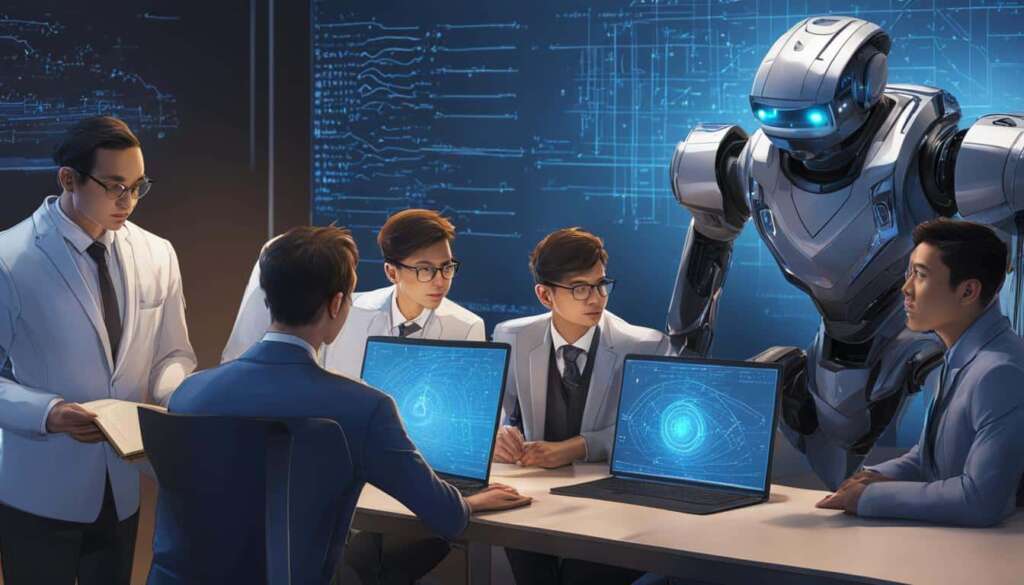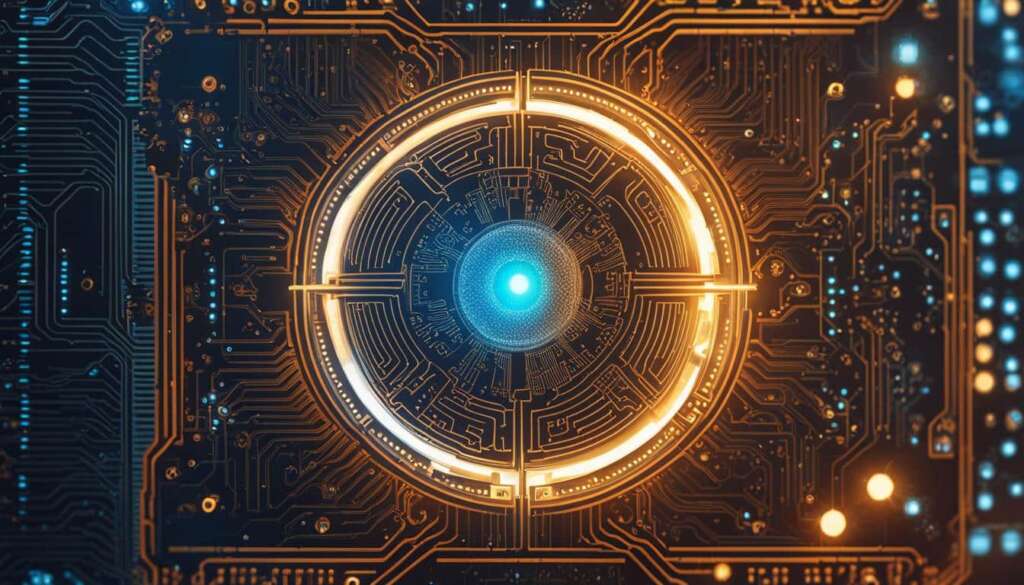Table of Contents
Discover the latest groundbreaking achievement in the world of artificial intelligence: Bart and DeepMind’s collaboration, which promises to revolutionize fusion energy and pave the way for clean and sustainable power sources.
With the urgent need to tackle climate change and reduce our reliance on fossil fuels, finding alternative sources of energy is crucial. Fusion energy, the process that powers the sun and stars, holds immense potential for providing limitless, clean, and carbon-free power. However, harnessing this powerful energy has remained a complex challenge.
But now, thanks to the remarkable combination of artificial intelligence and Google’s ingenuity, a groundbreaking AI breakthrough has been achieved. Bart, an experimental conversational AI system developed by Google research, has collaborated with DeepMind, a leading player in AI development, to unlock the secrets of fusion energy.
This collaboration between Bart and DeepMind has ushered in a new era of AI-driven research into fusion energy. By harnessing the power of large language models and advanced AI algorithms, Bart and DeepMind are spearheading cutting-edge advancements in the field.
Stay tuned as we delve deeper into the fascinating collaboration between Bart and DeepMind, exploring its intricacies and the potential impact it holds for achieving a sustainable future powered by fusion energy.
The Collaboration Between Bart and DeepMind
The collaboration between Bart and DeepMind represents a significant milestone in AI development. Google’s DeepMind, a pioneer in the field, has been at the forefront of developing cutting-edge AI algorithms that can learn to play games, control robots, and solve complex problems. Meanwhile, Bart is an experimental conversational AI system developed by Google research that aims to compete with chat GPT and other large language models capable of generating human-like text.
DeepMind: Pushing the Boundaries of AI Development
DeepMind, founded in 2010, has made remarkable strides in AI development. Through advanced machine learning techniques, the company has achieved unprecedented success in tasks such as image recognition, natural language understanding, and strategic gaming. DeepMind’s AlphaGo, for instance, made headlines by defeating the world champion Go player, Lee Sedol, showcasing the power of AI in complex decision-making.
Over the years, DeepMind has been dedicated to pushing the boundaries of AI research and development. They have focused on creating algorithms that can tackle real-world problems, paving the way for advancements in various domains, ranging from healthcare to energy.
Bart: Conversational AI for Natural Language Generation
Bart, on the other hand, is a project led by Google Research that aims to rival chat GPT and other large language models. The purpose of Bart is to generate human-like text and engage in meaningful conversations. By leveraging a combination of deep learning techniques and vast amounts of training data, Bart demonstrates the potential for AI to understand and generate contextually relevant responses.
This experimental conversational AI system utilizes large language models to enable natural language generation. Unlike traditional chatbots, Bart has the ability to generate responses that are not only grammatically correct but also contextually appropriate, making interactions with AI more realistic and human-like.
“With Bart, we are taking conversational AI to new heights, enabling more interactive and engaging conversations between humans and machines.” – Google Research Team
Promising Applications and Future Impact
The collaboration between Bart and DeepMind has sparked excitement in the AI community, as it brings together the strengths of both entities. The combination of DeepMind’s expertise in AI development and Bart’s conversational capabilities opens up new possibilities for AI-powered applications.
One potential application is the integration of Bart with existing Google products and services. Users could benefit from more advanced virtual assistants, capable of understanding complex queries and providing comprehensive responses. Bart’s ability to generate human-like text could transform the user experience, making interactions with AI more seamless and personalized.
The potential impact of Bart and DeepMind’s collaboration extends beyond personal assistants. These advancements in conversational AI could revolutionize customer service, content generation, and even virtual storytelling. By enabling machines to understand and generate natural language, new avenues for creativity and innovation emerge.
As with any technological advancement, it is important to address potential challenges and risks. Large language models like Bart must be trained responsibly to avoid biases and misinformation. Additionally, privacy concerns and ethical considerations surrounding AI development should be carefully navigated.
Overall, the collaboration between Bart and DeepMind represents a significant leap forward in AI development. The fusion of Bart’s conversational capabilities and DeepMind’s advanced AI algorithms creates exciting possibilities for the future of AI-powered applications. By leveraging the strengths of both entities, we are one step closer to a world where humans and machines can interact seamlessly and intelligently.
| Advantages | Risks |
|---|---|
| Enhanced virtual assistants | Potential for spreading misinformation |
| Improved customer service | Data privacy concerns |
| Innovative content generation | Over-reliance on automated assistance |
| Transformed user experience | Ethical considerations |
Advantages and Risks of Bart and DeepMind AI
One key advantage of Bart over other chatbots is its ability to access information on the web in real-time, rather than relying solely on its initial training. This allows Bart to incorporate up-to-date facts and context into its responses, making it more knowledgeable in conversations about recent events and topics.
However, there are also risks and concerns surrounding Bart and DeepMind AI. Large language models like Bart carry the risk of spreading misinformation if not properly trained on accurate data. Data privacy and the potential over-reliance on automated assistance are also concerns. Google must navigate these challenges responsibly to uphold trust and avoid negative consequences.
In conclusion, the collaboration between Bart and DeepMind signifies an exciting development in the field of AI. Google’s DeepMind continues to pioneer groundbreaking AI algorithms, while Bart aims to compete with other large language models. The potential to transform Google’s products and services is immense, but risks and concerns, such as misinformation and privacy, must be addressed. With responsible development and deployment, Bart and DeepMind have the power to positively reshape our future.
FAQ
What is the collaboration between Bart and DeepMind?
The collaboration between Bart and DeepMind is a fusion of cutting-edge AI technology. Bart is an experimental conversational AI system developed by Google research, while DeepMind is a pioneer in the field of AI with expertise in developing advanced algorithms.
What sets Bart apart from other chatbots?
Bart has the unique ability to access real-time information from the web, allowing it to incorporate up-to-date facts and context into its responses. Unlike other chatbots, Bart isn’t limited to its initial training and can provide more knowledgeable and relevant conversations.
What are the advantages of Bart and DeepMind AI?
Bart and DeepMind AI offer numerous advantages. Bart’s real-time access to information allows for enhanced accuracy and relevance in conversations. DeepMind’s expertise in developing cutting-edge algorithms enables continuous advancements in AI capabilities.
What are the risks and concerns associated with Bart and DeepMind AI?
One of the main risks is the potential spread of misinformation if these large language models are not properly trained on accurate data. There are also concerns about data privacy and the over-reliance on automated assistance. It is essential for Google to address these challenges responsibly.
How can Bart and DeepMind AI impact the future?
Bart and DeepMind AI have the potential to transform the way we access information and interact with technology. Their advanced capabilities can reshape Google’s products and services, leading to more efficient and intelligent systems. However, responsible development and deployment are crucial to ensure positive outcomes and mitigate potential risks.













